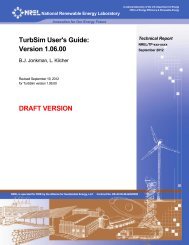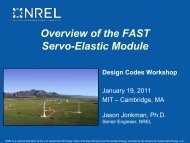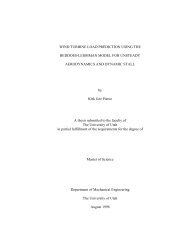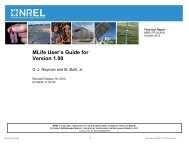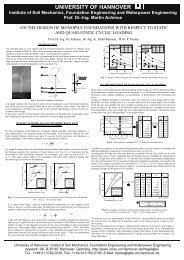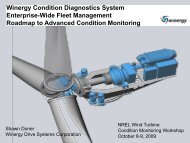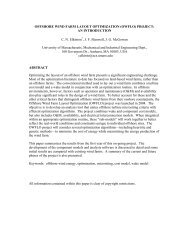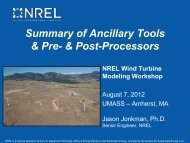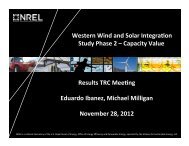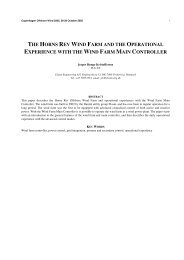Paper Frequency Domain
Paper Frequency Domain
Paper Frequency Domain
You also want an ePaper? Increase the reach of your titles
YUMPU automatically turns print PDFs into web optimized ePapers that Google loves.
10 3 <strong>Frequency</strong> [Hz]spectral density [(m/s) 2 s]10 210 110 010 -110 -2Improved Von Karman time simulationImproved Von Karman theoretical10 -30 0.5 1 1.5 2Figure 3.1 Wind spectrum, mean = 10 m/s, TI = 12%For the resulting tower top load, the response spectrum is obtained by processing the time domainsimulation of the axial load on the rotor axis to a spectrum using the same spectral settings; the result ispresented in Figure 3.2. The effects of rotational sampling at 3P, 6P and 9P are clearly visible.10 11 <strong>Frequency</strong> [Hz]10 10Response spectrum tower top load[N 2 *s]10 910 810 710 610 510 40 0.5 1 1.5 2 2.5 3 3.5 4Figure 3.2 Response spectrum for tower top loadNow, the transfer function can be determined by taking the square root of the response spectrum divided bythe wind spectrum at each frequency. Because the spectral estimates have been created with equal settings,the frequency intervals are the same, making the calculation of the transfer function very straightforward.6 x 104 <strong>Frequency</strong> [Hz]TRF wind speed to tower top load[N/(m/s)]5432100 0.5 1 1.5 2Figure 3.3 Transfer function between wind speed and tower top loadThe mean rotor speed in this simulation is 21 RPM = 0.35 Hz. The 1P peak cannot be distinguished, the 3Pspeed at 1.05 Hz is clearly visible. It has to be noted that the 1 st blade flapping frequency also lies in thisrange, which is, based on the "Campbell-diagram" approach, not entirely an ideal situation.



